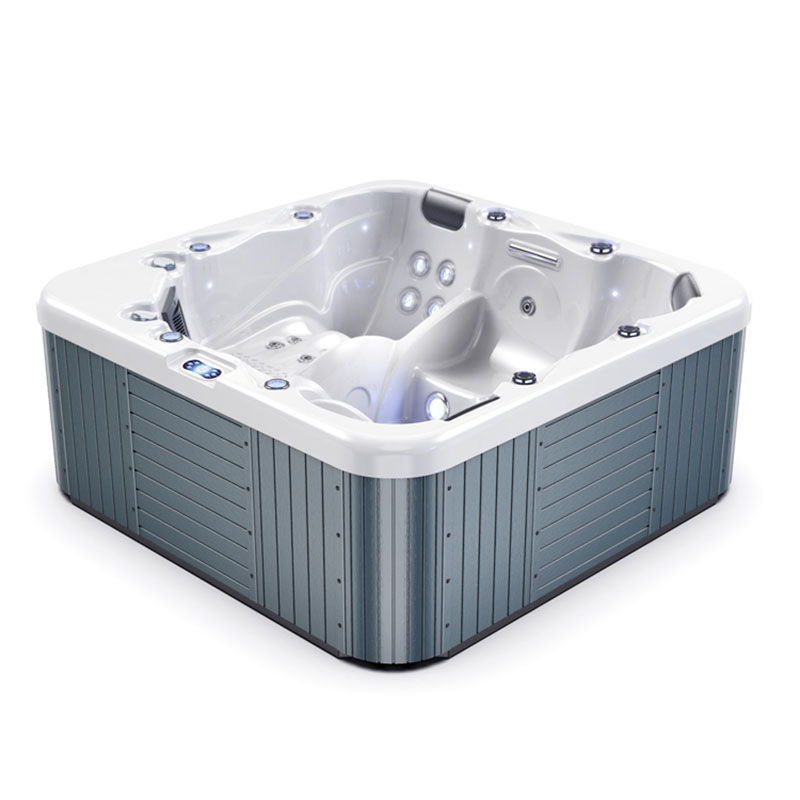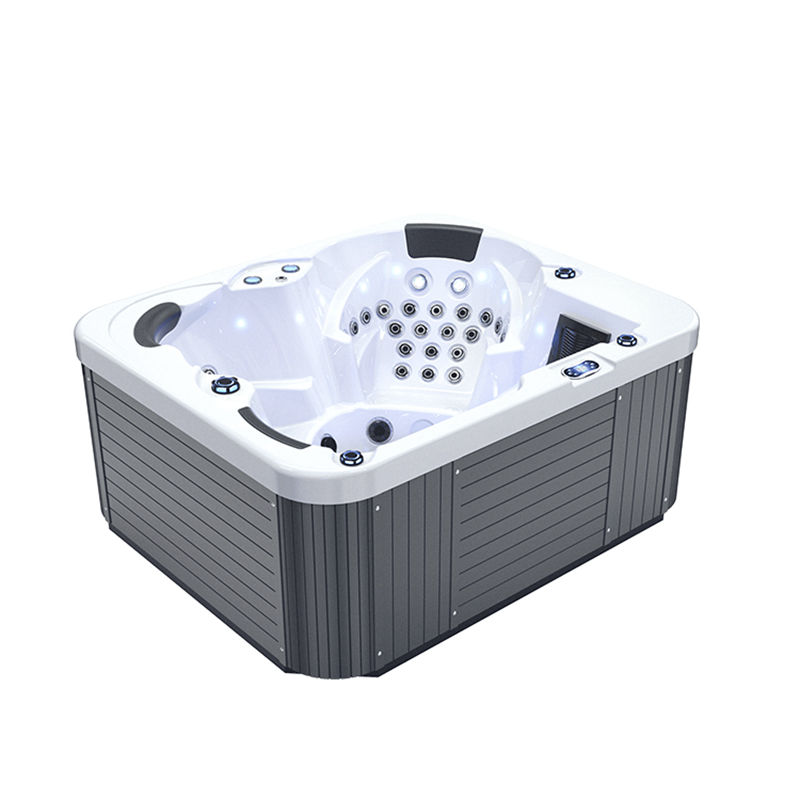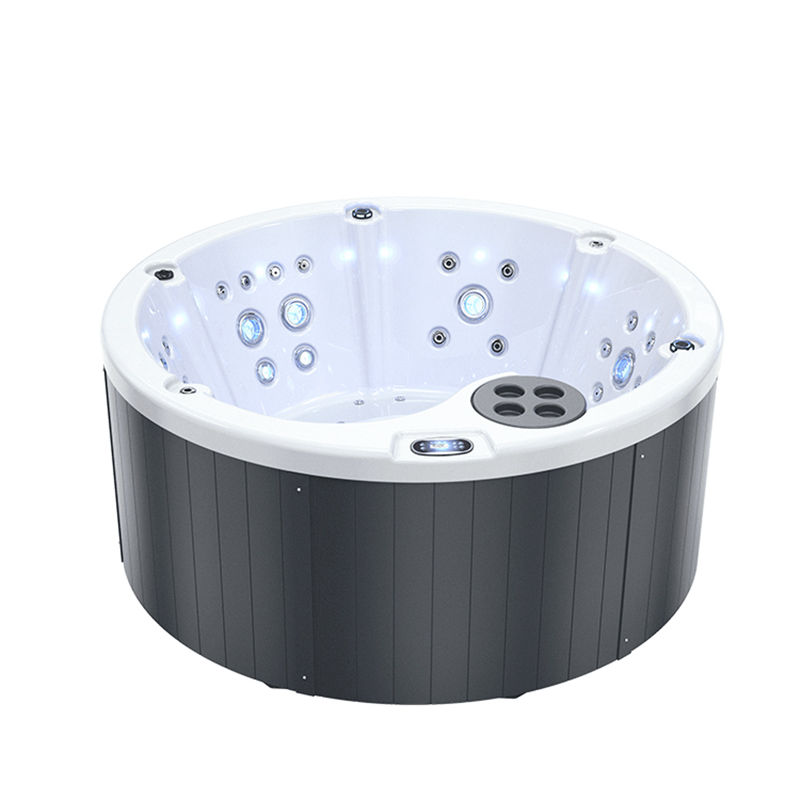Whirlpool spa hot tubs are a great place for many people to relax and unwind, but keeping them clean and safe is a task that can’t be ignored. Whether it’s because of long periods of disuse or because of improper maintenance, the water in a whirlpool spa hot tub can become cloudy or even have green stuff in it.
These green things are mostly caused by algae, but they can also be other microorganisms or contaminants. To combat this, “shock” treatments have become a common solution.
This article will explore whether shock treatments can effectively remove green stuff from whirlpool spa hot tubs, explain how shock treatments work, how to use them correctly to remove algae, and how to prevent this from happening again.
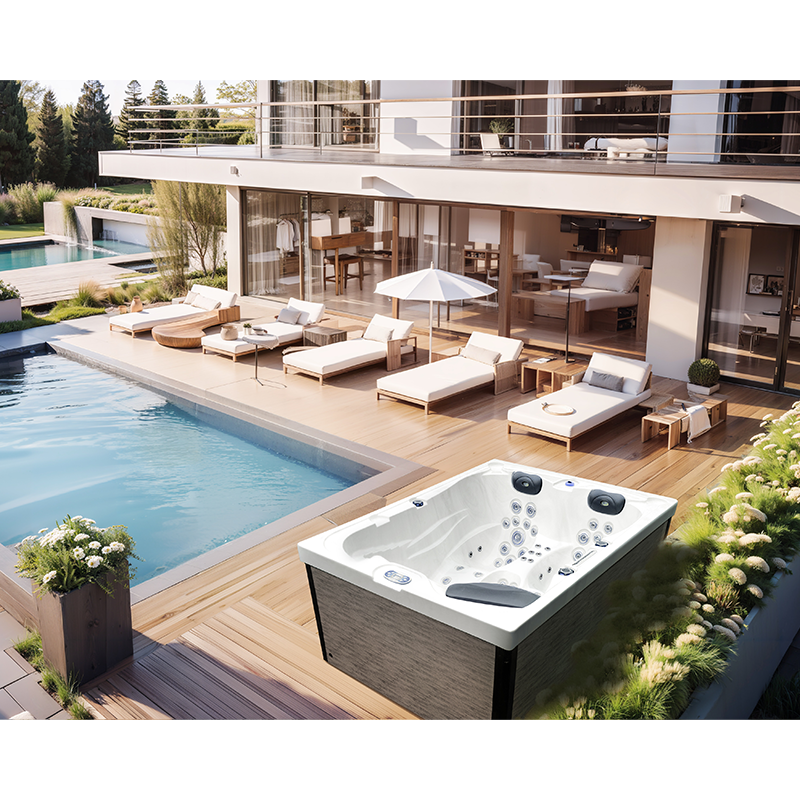
Why do green things appear in whirlpool spa hot tubs?
First, to understand whether shock treatments can effectively remove these green things, we need to understand what they are.
1. Algae Growth
Green stuff is usually algae. These tiny plant-like microorganisms multiply very quickly in a moist, nutrient-rich environment. When there is not enough disinfectant (such as chlorine or bromine) in the whirlpool spa hot tub water, algae will take advantage of the situation and multiply rapidly in the water, causing the water to turn green. The whirlpool spa hot tub is exposed to sunlight and air, and the algae may multiply faster, especially when the water temperature is suitable and the disinfectant concentration is insufficient.
2. Microbial and organic contaminants
In addition to algae, whirlpool spa hot tub water may also contain other green materials, which are usually the accumulation of microorganisms or organic matter, such as phytoplankton, plant debris or decomposition products of algae. These materials may enter the tub with the environment or user activities and accumulate if they are not cleaned in time.
3. Water quality imbalance
When the pH value, alkalinity or disinfectant level in the whirlpool spa hot tub water is unbalanced, the water quality will become unstable, and algae and other microorganisms will have the opportunity to multiply in large numbers, causing the water to appear green. Sunlight, dust, rainwater, and pollutants such as oil and sweat brought into the body during the use of the tub can cause water quality imbalances and further aggravate the growth of algae.
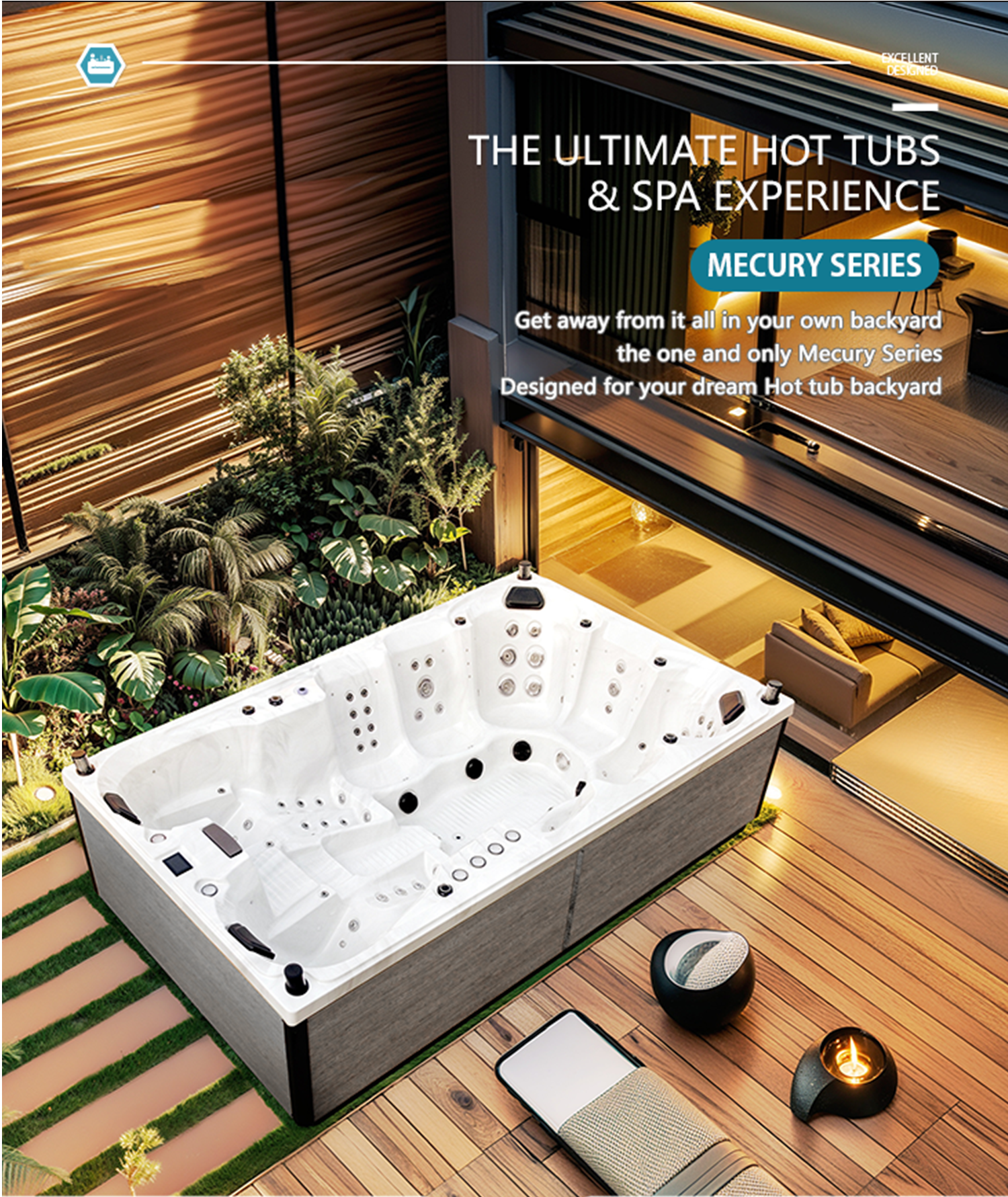
What is shock treatment?
Shock treatment, also known as "vibration" treatment, is the addition of large amounts of oxidants (such as chlorine, bromine or non-chlorine chemicals) to water to quickly eliminate organic matter, bacteria, algae and other contaminants in the water. Shock treatment is an important part of the daily maintenance of whirlpool spa hot tubs, especially when there are water quality problems, shock treatment can provide a fast and effective cleaning method.
Shock treatment can effectively decompose and oxidize organic matter, algae and other contaminants in the water by increasing the oxidant content in the whirlpool spa hot tub water in a short period of time, thereby restoring the water to a clear and transparent state.
Can shock remove green things from whirlpool spa hot tubs?
Shock treatment is very effective in removing green matter, especially algae, from whirlpool spa hot tubs. But this requires the correct dosage, appropriate treatment methods and continuous maintenance of the overall water quality of the tub.
1. The role of shock treatment
The core role of shock treatment is to increase the oxidizing capacity in the water, which means that it can quickly decompose the algae cell wall and destroy the algae breeding environment, thereby effectively removing algae. By adding a large amount of an oxidizing agent (such as chlorine), the shocking agent can directly act on the algae, killing and decomposing these microorganisms and returning the water to a clean state.
Typically, within a few hours after the shocking treatment, the green algae in the whirlpool spa hot tub water will begin to break down and the water quality will gradually return to clear.
2. Speed of shocking treatment
Depending on the size of the whirlpool spa hot tub, the extent of the algae growth, and the type of shocking agent used, shocking treatment may take several hours or even a whole day to completely remove all algae. Generally, shocking treatment will be effective in mild algae infestations within 4 to 6 hours. If the algae has already grown in large numbers, it may take longer or even require multiple shocking treatments.
3. Correct shocking agent selection
When removing algae, it is important to choose the right shocking agent. Chlorine-based shocking agents are the most common choice, which can quickly increase the chlorine level in the water and effectively kill algae. However, if the whirlpool spa hot tub user is allergic to chlorine or does not like the smell of chlorine, non-chlorine shocking agents are also an alternative. Non-chlorine shock agents are usually based on peroxides or other oxidants. They do not increase the chlorine content in the water, but they also have strong oxidizing power and can effectively remove algae.
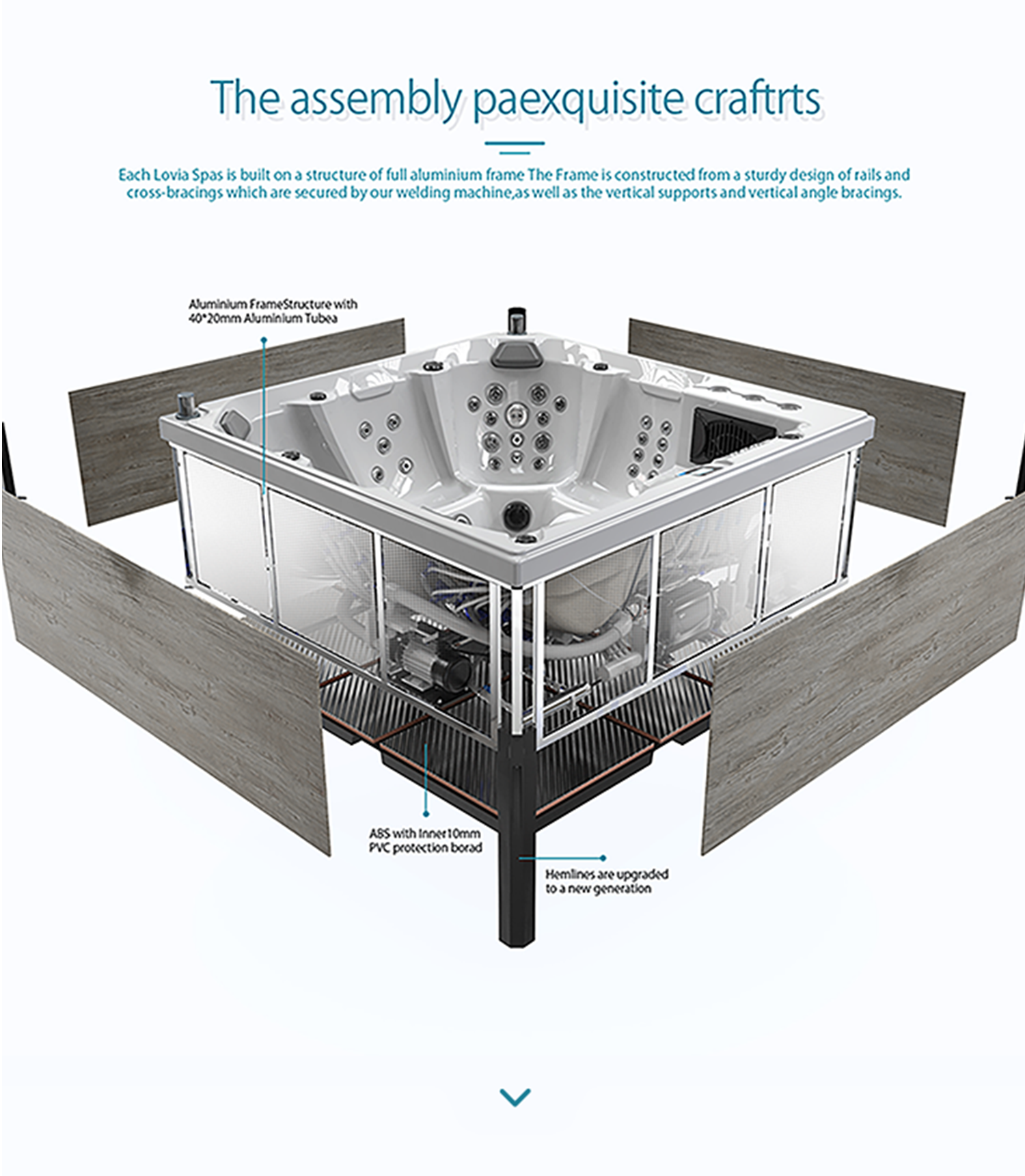
Whirlpool spa hot tub: How to perform effective shock treatment?
To ensure the effectiveness of whirlpool spa hot tub shock treatment, the following steps are key to removing green algae.
1. Test water quality
Before performing shock treatment, the chlorine, pH and alkalinity levels in the water should be tested first. The ideal pH should be between 7.2 and 7.8. If the pH is too high or too low, the effect of the shock agent may be weakened. By adjusting the pH and alkalinity, the maximum efficiency of the shock treatment can be ensured.
2. Choose the right shock agent
Depending on the size of the whirlpool spa hot tub and the degree of algae reproduction, choose the right amount of shock agent. Generally speaking, 15 grams to 20 grams of chlorine shock agent is required for every 1,000 liters of water. The amount of non-chlorine shock agent will vary, and users should adjust it according to the product instructions.
3. Perform shock treatment
Sprinkle the shock agent evenly into the water, ensuring that every corner is fully exposed to the chemical. To improve the distribution of the chemical, it is recommended to turn on the whirlpool spa hot tub's circulation system and injectors during the shock treatment to ensure that the oxidant in the water can be more evenly distributed and effectively act on the algae.
4. Wait for the oxidation reaction
After the shock treatment, the chlorine content in the water will increase significantly and the water quality may become slightly turbid. This is because the pollutants and algae in the water are being broken down. It usually takes 4 to 6 hours for the algae to begin to break down and the water quality gradually becomes clear. If the pollution is serious, it may take 24 hours to completely remove it.
5. Clean the filter
Algae and other pollutants will be trapped by the filter, so after the shock treatment, the whirlpool spa hot tub filter should be cleaned or replaced in time to ensure the cleanliness and circulation of the water. If the filter is already seriously clogged, it may need to be cleaned or replaced more frequently.
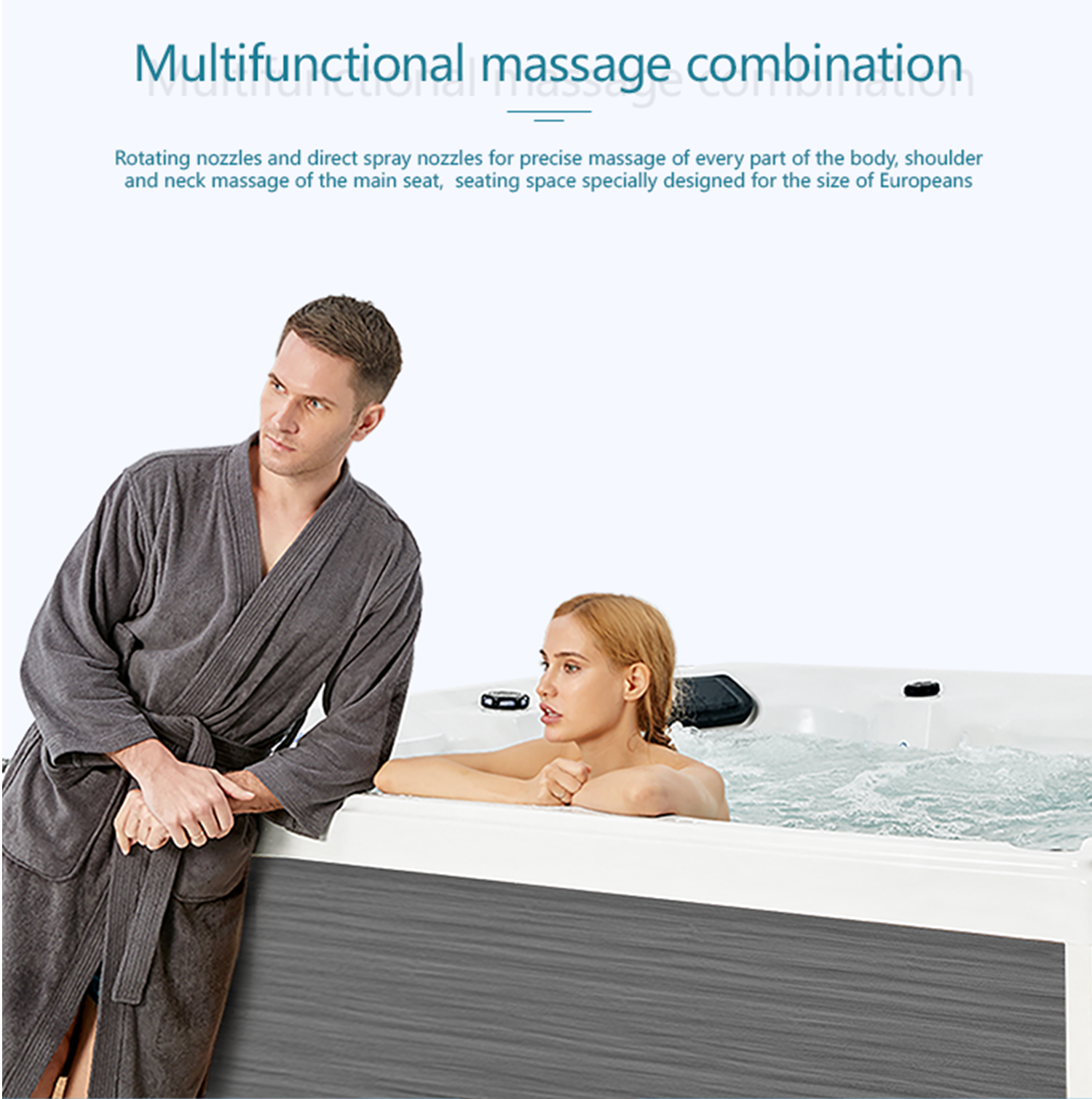
How to maintain the water quality of the whirlpool spa hot tub after the shock treatment?
After the shock treatment effectively removes the green algae, how to prevent them from breeding again is the key.
1. Test Water Quality Regularly
After shock treatment, it is recommended that whirlpool spa hot tub users regularly test water quality, including chlorine content, pH, and alkalinity. Maintaining a balanced water quality, especially the proper chlorine level, is an effective means of preventing algae from growing again. Use test strips or water quality testing instruments regularly to ensure that water quality is maintained within the ideal range.
2. Maintain Proper Chlorine Levels
Algae often thrives when chlorine levels are insufficient, so maintaining proper chlorine levels is key to preventing algae. Typically, chlorine levels in whirlpool spa hot tubs should be maintained between 1 and 3 ppm. If the water is frequently exposed or used frequently, more frequent chlorine additions or light shock treatments may be required.
3. Clean the filtration system regularly
The filtration system is another key factor in preventing algae growth. Regularly cleaning or replacing the whirlpool spa hot tub filter can effectively remove organic matter and contaminants from the water, reducing the conditions for algae growth. It is recommended to deep clean the filter every once in a while, especially when water quality issues occur.
4. Avoid too much exposure to sunlight
Algae grows rapidly in sunlight, especially in warm water. Therefore, minimize the time the whirlpool spa hot tub is exposed to sunlight. Using a whirlpool spa hot tub cover or protective cover can effectively reduce direct sunlight exposure, thereby reducing the reproduction rate of algae.
What is the typical lead time for orders?
A13: Lead time varies depending on the product type and customization level. For standard spa jacuzzi tubs or swim spas, Guangzhou HuanTong Industrial typically processes orders within 25-35 days. Customized or bulk orders may take longer but benefit from our efficient factory workflows and professional production management. We keep all buyers informed and provide detailed quotes including delivery schedules, ensuring transparency and confidence in purchasing from our factory directly.


